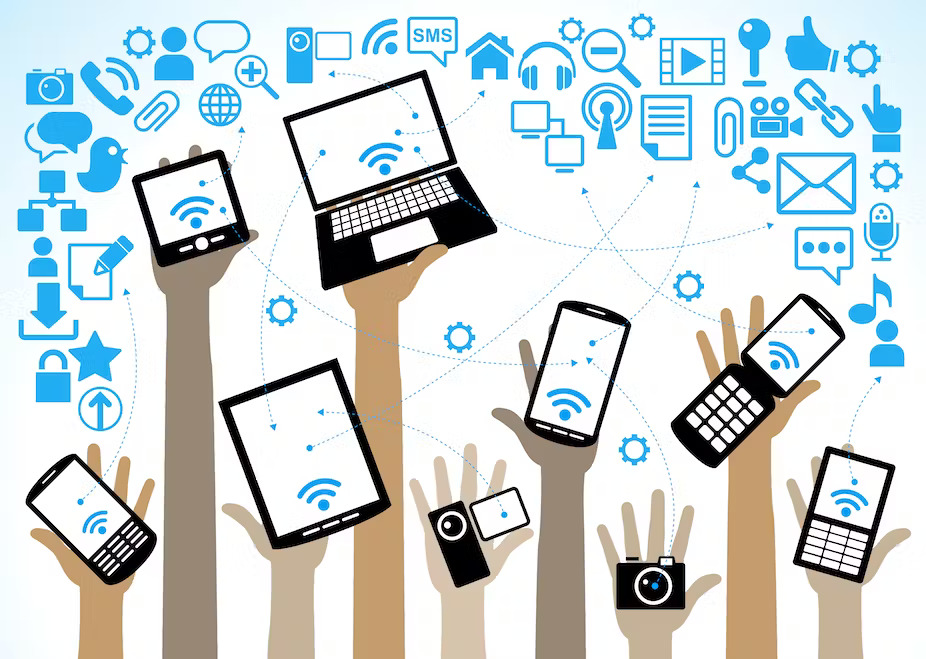The framework outlined by Sieck et al. (2021) in Figure 1 serves as an exceptionally useful tool that shows how digital literacy connects to almost every part of a person’s life. It was eye-opening to see how dependent we’ve become on internet access and how not having it creates a clear divide between those who do and don’t have access. Sieck and his colleagues explain that factors like income, race, and whether someone lives in a rural or urban area all contribute to these disparities. The most important aspect of this framework, in my opinion, is the focus on expanding access for the unserved and underserved populations, since digital access is considered a “super social determinant of health.” So many things, like employment, healthcare, and education, now rely on being able to connect online. The framework is impactful because it clearly shows how a lack of digital access can deepen existing social and health inequalities across multiple areas of life.
Sanders and Scanlon (2021) discuss how internet access is a basic human right, and that’s something I hadn’t considered before reading their article, but I completely agree. There is no way to truly thrive in today’s digital society without it. Their point that the internet now plays such a crucial role in education, employment, and housing shows how it has become a basic human need. I also found it interesting that they frame internet access as a gender issue, emphasizing how access can empower women and girls by giving them opportunities to learn, connect, and find resources. I think their arguments are very persuasive because the evidence they present makes it hard to disagree. The reality is that without digital access, it’s nearly impossible to fully participate in modern life since it’s connected to almost everything we do. One of the most promising strategies they mention is California’s Internet for All Now Act, which shows how state-level government involvement can expand access and support digital literacy for lower-income and rural communities. However, their suggestion of relying on federal involvement seems less practical to me, especially given the current political climate and the limited attention given to underserved populations.
The article by Craig et al. (2021) discusses the AFFIRM program, which was designed to support LGBTQ+ individuals through telehealth group therapy using a CBT-based therapeutic approach. The goal of the program was to help participants connect, build resilience, and find community while addressing mental health challenges. One of the most effective aspects of AFFIRM was how it fostered an online community, allowing participants to continue supporting one another outside of therapy through social media and other digital platforms. This is especially important since many LGBTQ+ youth report not having strong support systems at home or people they can truly be themselves around. However, while the program has clear benefits, it also raises an important concern about digital access. Not everyone, and particularly those from low-income or minority backgrounds within the LGBTQ+ community, has reliable internet or technology to participate. For this reason, social workers and policymakers must prioritize digital inclusion and ensure equitable access, since connection and participation in modern society are increasingly dependent on being online.
References
Craig, S.L., Iacono, G., Pascoe, R. et al. Adapting Clinical Skills to Telehealth: Applications of Affirmative Cognitive-Behavioral Therapy with LGBTQ+ Youth. Clin Soc Work J 49, 471–483 (2021).
Sieck, C. J., Sheon, A., Ancker, J. S., Castek, J., Callahan, B., & Siefer, A. (2021). Digital inclusion as a social determinant of health. NPJ Digital Medicine, 4(1), 52.
Sanders, C. K., & Scanlon, E. (2021). The digital divide is a human rights issue: Advancing social inclusion through social work advocacy. Journal of human rights and social work, 6(2), 130-143.


hey 🙂 I really value how you clearly connected all three articles and showed the real world implications of the digital divide. You explained Sieck’s framework very well particularly the impacts of technology on overall wellbeing. Your point about the AFFIRM program was also great. It shows how technology can be both a challenge and solution, which is how a lot of things go in our field of work.